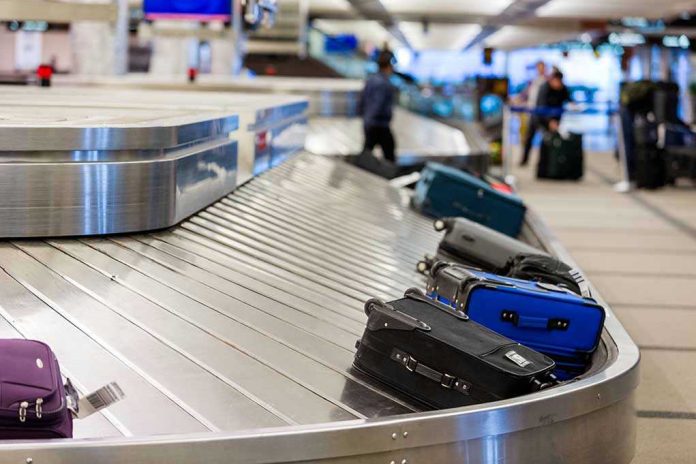
The split-second decision by St. Louis police to escalate from Tasers to gunfire inside the state’s busiest airport is a masterclass in how public safety and deadly force collide when infrastructure is tested by chaos.
Story Snapshot
- Police shot and killed a knife-wielding man after non-lethal measures failed at St. Louis Lambert International Airport.
- The incident unfolded in a restricted area during off-peak hours, averting harm to travelers and staff.
- Law enforcement protocols guided officers through a rapid escalation from Tasers to firearms.
- The event prompts renewed scrutiny of airport security, police procedures, and the tension between safety and force.
Escalation in a High-Security Zone: Anatomy of a Crisis
At approximately 1:00 a.m. on November 21, 2025, police patrolling St. Louis Lambert International Airport encountered a man in a restricted area. Officers directed him to leave. He refused. The man then produced a knife, escalating a tense standoff in a space designed to be one of the most secure in Missouri. Police, adhering to protocol, attempted to subdue him with Tasers. The electrical charge failed to incapacitate. As the man advanced, an officer drew his firearm and fired. The man died at the scene. No bystanders or staff were injured, but the sense of vulnerability in a critical location was palpable.
Incidents involving edged weapons inside airports are rare, but not unheard of. The immediate, visible police response—first with non-lethal force, then with a firearm—reflects a post-9/11 doctrine that prioritizes layered defense, rapid containment, and protection of the traveling public. The off-peak timing meant few civilians were present, but the symbolism of a deadly encounter within airport walls reverberated far beyond the terminal.
Protocols, Procedures, and the Weight of Split-Second Decisions
Protocols for U.S. airport police emphasize de-escalation and the use of non-lethal force whenever possible. In practice, officers are trained to assess threats based on proximity, weapon type, and the risk to innocent bystanders. Tasers often offer a critical buffer, but they are not foolproof. When a suspect armed with a knife continues to advance after a Taser deployment, the situation becomes life-threatening within seconds. In this case, officers transitioned to lethal force only when all other immediate options were exhausted, and the threat persisted. Such decisions are not made lightly, especially in a venue where every action is scrutinized by security cameras, bystanders, and the court of public opinion.
Police spokesperson Vera Clay outlined the incident, confirming that non-lethal measures failed before lethal force was used. The swift, transparent release of details is standard operating procedure in the aftermath of police shootings and intended to maintain public trust. The identity of the deceased remains undisclosed, and the investigation continues, as is customary in police-involved fatalities.
Security, Public Confidence, and the Cycle of Review
Airports like St. Louis Lambert International operate under a constant threat matrix, balancing efficiency with the need to guard against both organized and lone-actor violence. Every serious incident triggers a rapid review of procedures. In this case, the absence of additional injuries and the quick resolution will be weighed against the necessity and sequence of force. Law enforcement experts argue that rapid escalation is justified when non-lethal options fail against a credible, advancing threat. Civil liberties advocates, meanwhile, may question whether every alternative was exhausted or if underlying issues—such as mental health—were considered in real time.
Knife-wielding man shot and killed by police at St. Louis airport https://t.co/brglcw8YQD pic.twitter.com/PhpbJ6d5pl
— The Independent (@Independent) November 21, 2025
Travelers and airport staff will notice a short-term uptick in visible security and, possibly, renewed messaging around vigilance. The event may prompt federal and local reviews of non-lethal technology and training. Nationally, the incident adds to the ongoing debate around police use of force, especially in sensitive or high-profile settings. For the family of the deceased, the story is far from over. For St. Louis, and for airports across the nation, the lessons will be dissected and, if needed, integrated into evolving security doctrine.
Sources:
Police say a man has been shot and killed after wielding a knife at St. Louis airport
Police say a man has been shot and killed after wielding a knife at St. Louis airport













